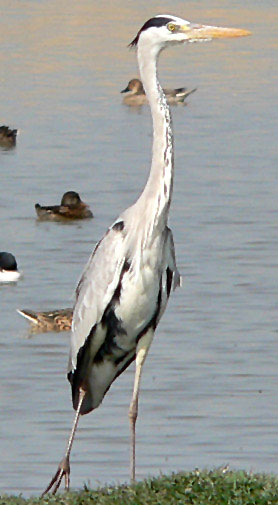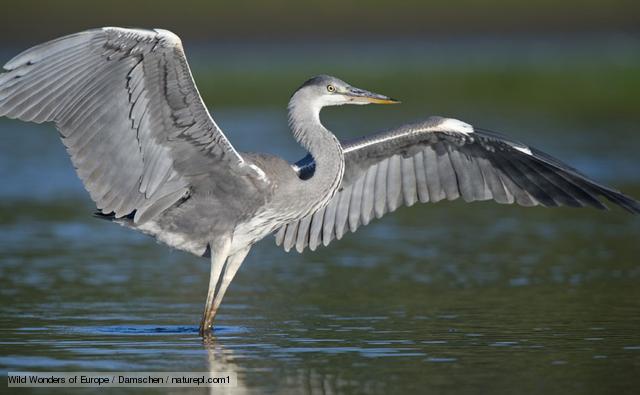
Ardea cinerea
SUBFAMILY
Ardeinae
TAXONOMY
Ardea cinerea Linnaeus, 1758, Sweden. Four subspecies.
OTHER COMMON NAMES
French: Hйron cendrй; German: Graureiher; Spanish: Garza
Real.
PHYSICAL CHARACTERISTICS
A large gray heron (35–39 in [90–98 cm]) with white and black
accents, a white crown with black plumes, black belly, and
white thighs. Weight is 2.2–4.6 lb (1–2.1 kg)
DISTRIBUTION
Most of the Old World, including Europe, Africa, Asia, East
Indies islands.
HABITAT
Typically found in and around shallow water, generally along
watercourses and shorelines, and usually in locations having
roost trees nearby. They may occur in inland fresh waters,
along estuaries, or in marine habitats.
BEHAVIOR
Stands or walks slowly in or around shallow water. Flies to and
from roosts and nesting colonies.
FEEDING ECOLOGY AND DIET
Usually hunts solitarily, but may feed in loose aggregations or
mixed species flocks. Eats mostly fish, but also small mammals
and amphibians. Young birds often use fish farms.
REPRODUCTIVE BIOLOGY
Nests solitarily or in colonies. Time of nesting differs according
to range. In temperate areas, breeding season is restricted
to spring and summer; in the tropics nesting is more flexible,
usually in the wet season. Nest is a stick platform located high
in a tall tree. Clutch size is normally four to five in Europe,
three in the tropics. Incubation is 25–26 days (21 in tropics);
chicks fledge in 50 days.
CONSERVATION STATUS
Not threatened. A rare light-colored population nesting in
coastal Mauritania deserves special conservation attention.
SIGNIFICANCE TO HUMANS
Hunted in the Middle Ages, and well appreciated as falconry targets.
In the present day, humans most frequently encounter the
birds along rivers and at fish farms, where young birds occur frequently.
They are killed in these situations in great numbers.
Other popular Animals
Photo Gallery of - Gray heron




 Animalia Life
Animalia Life